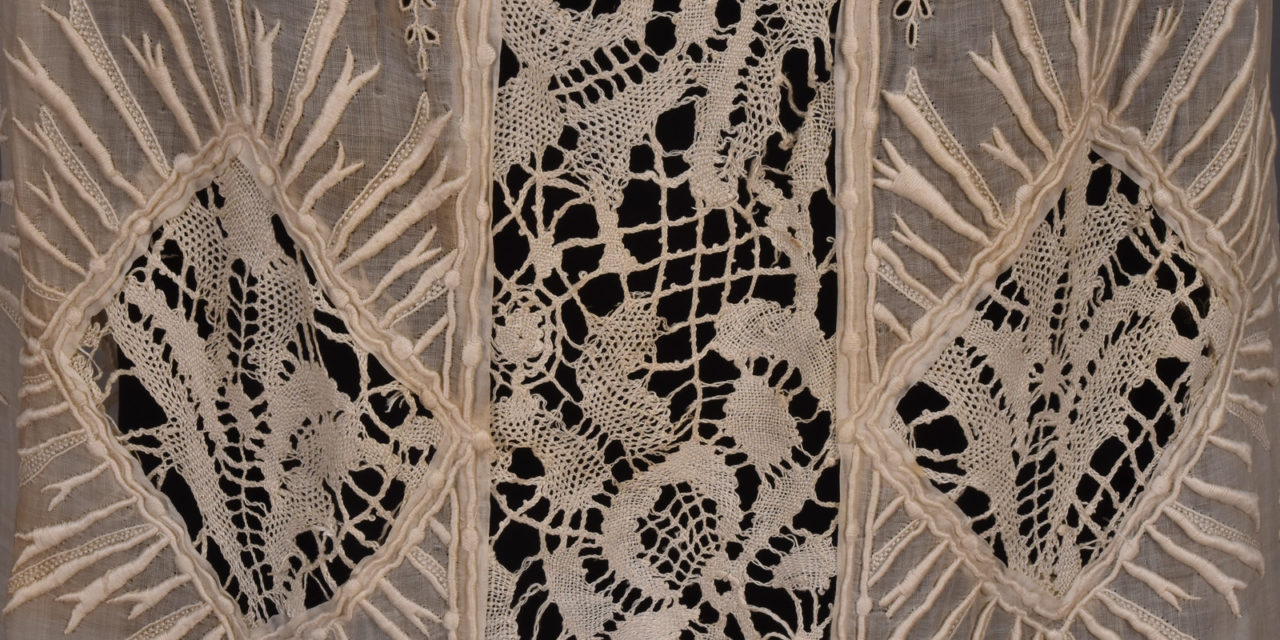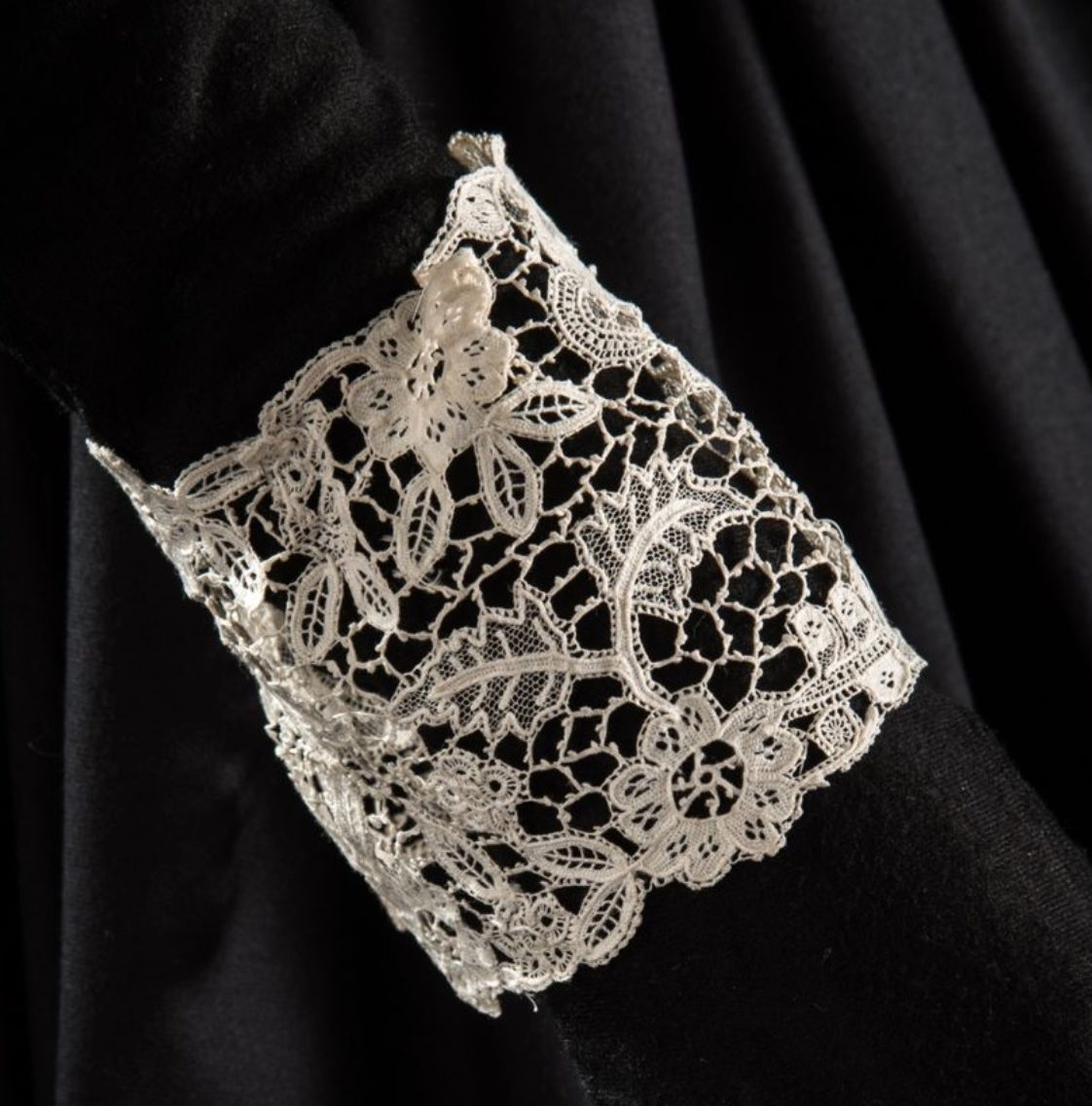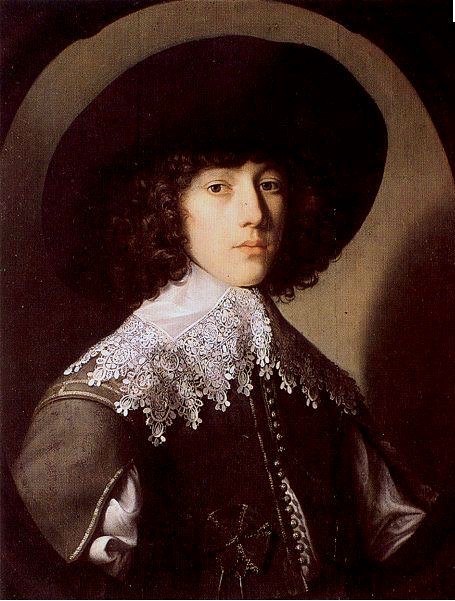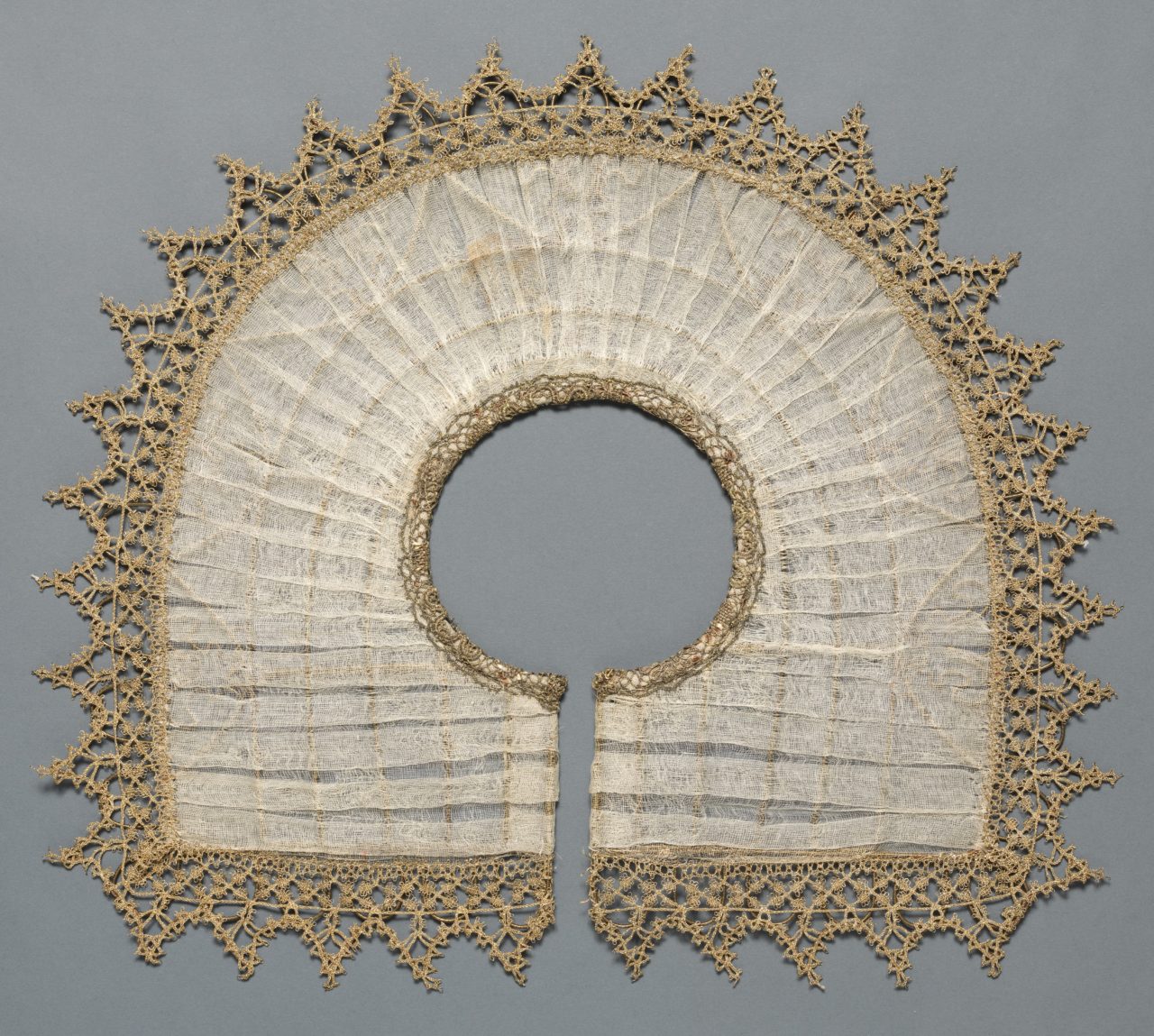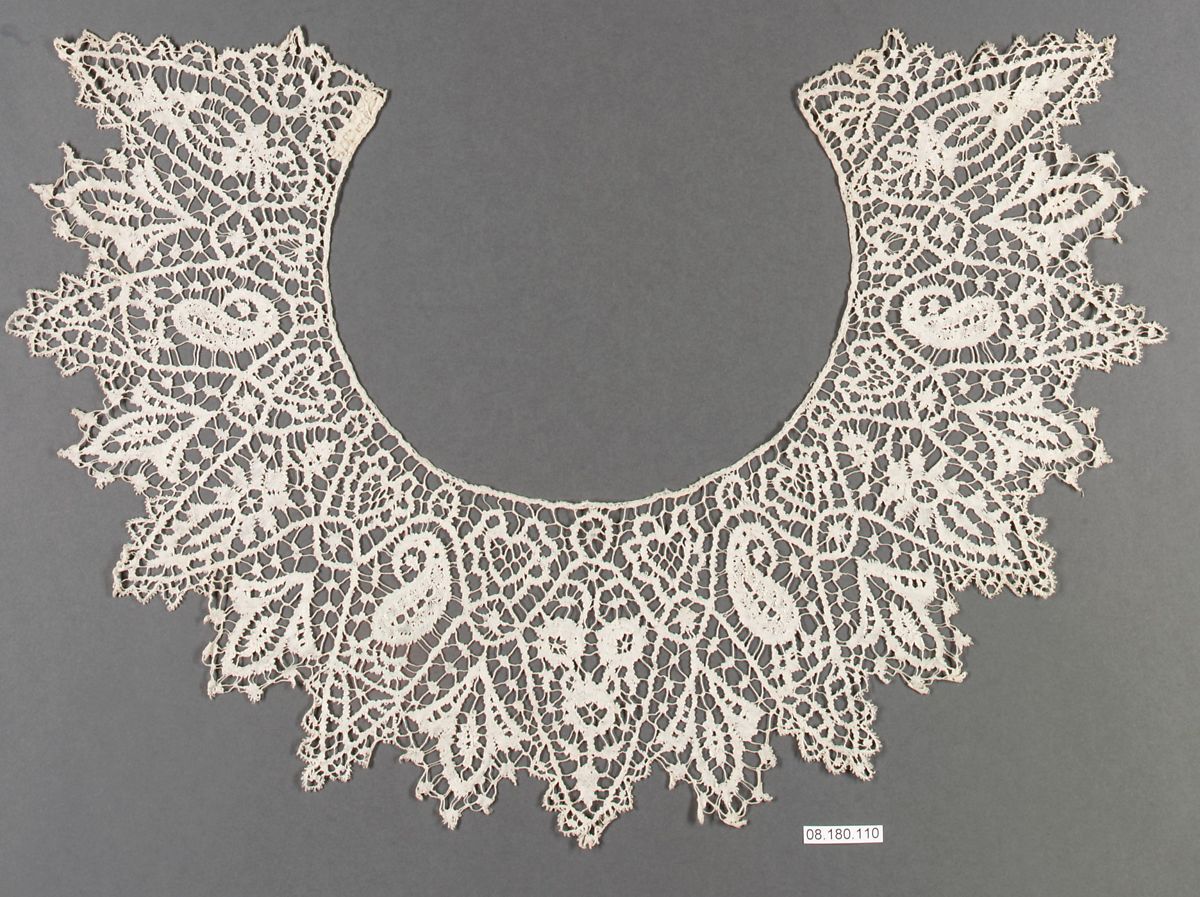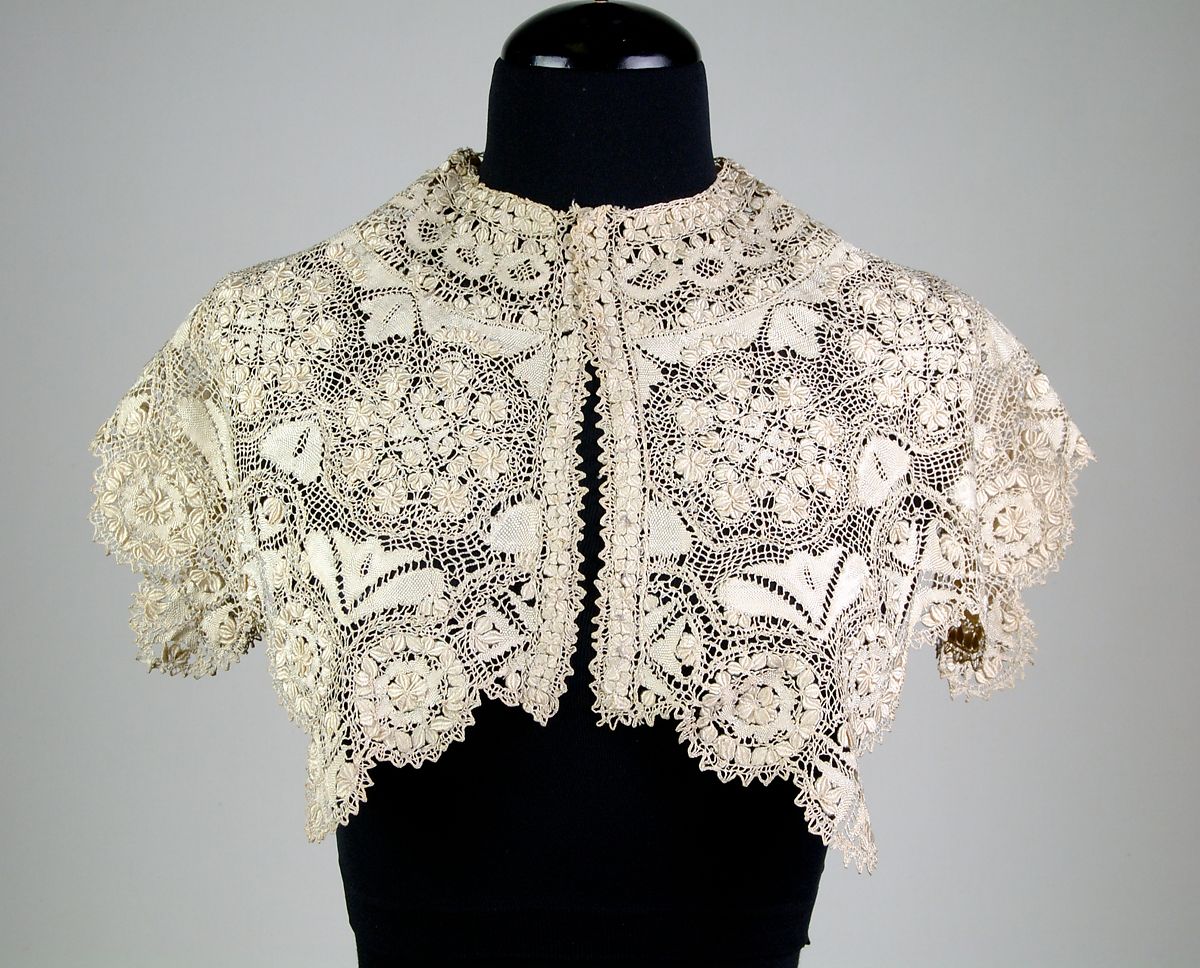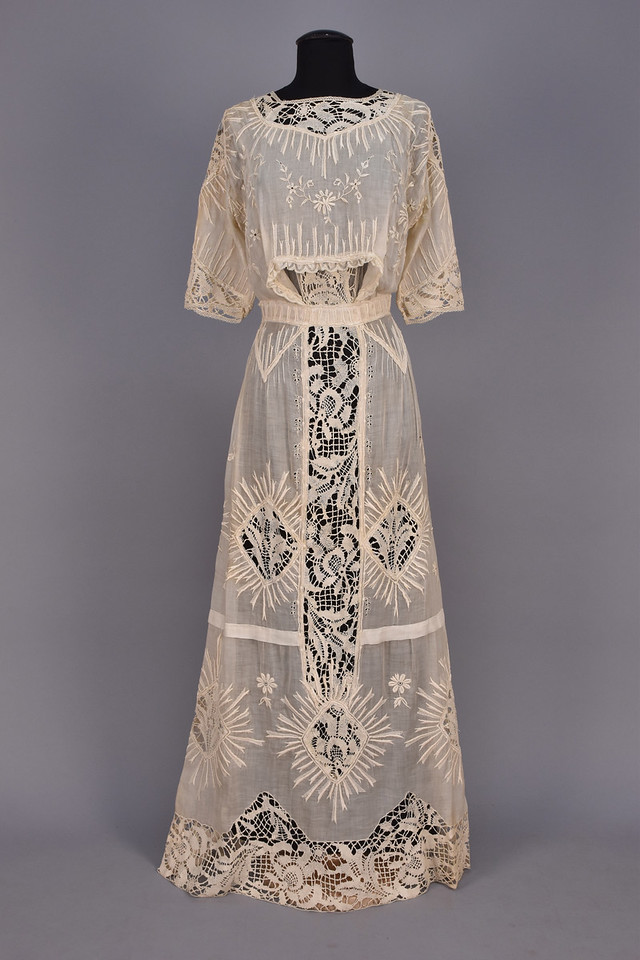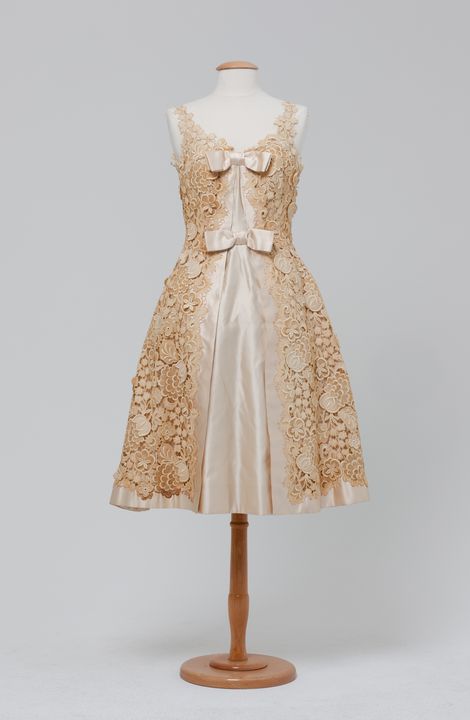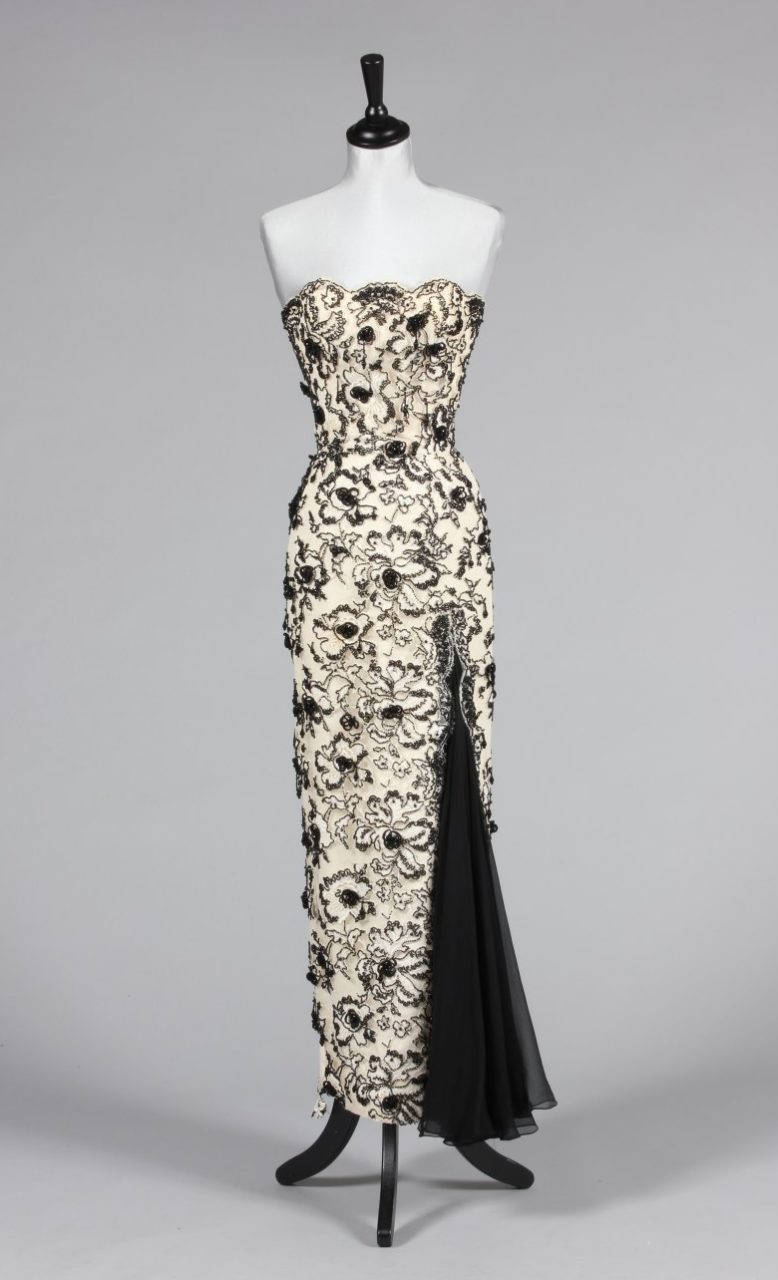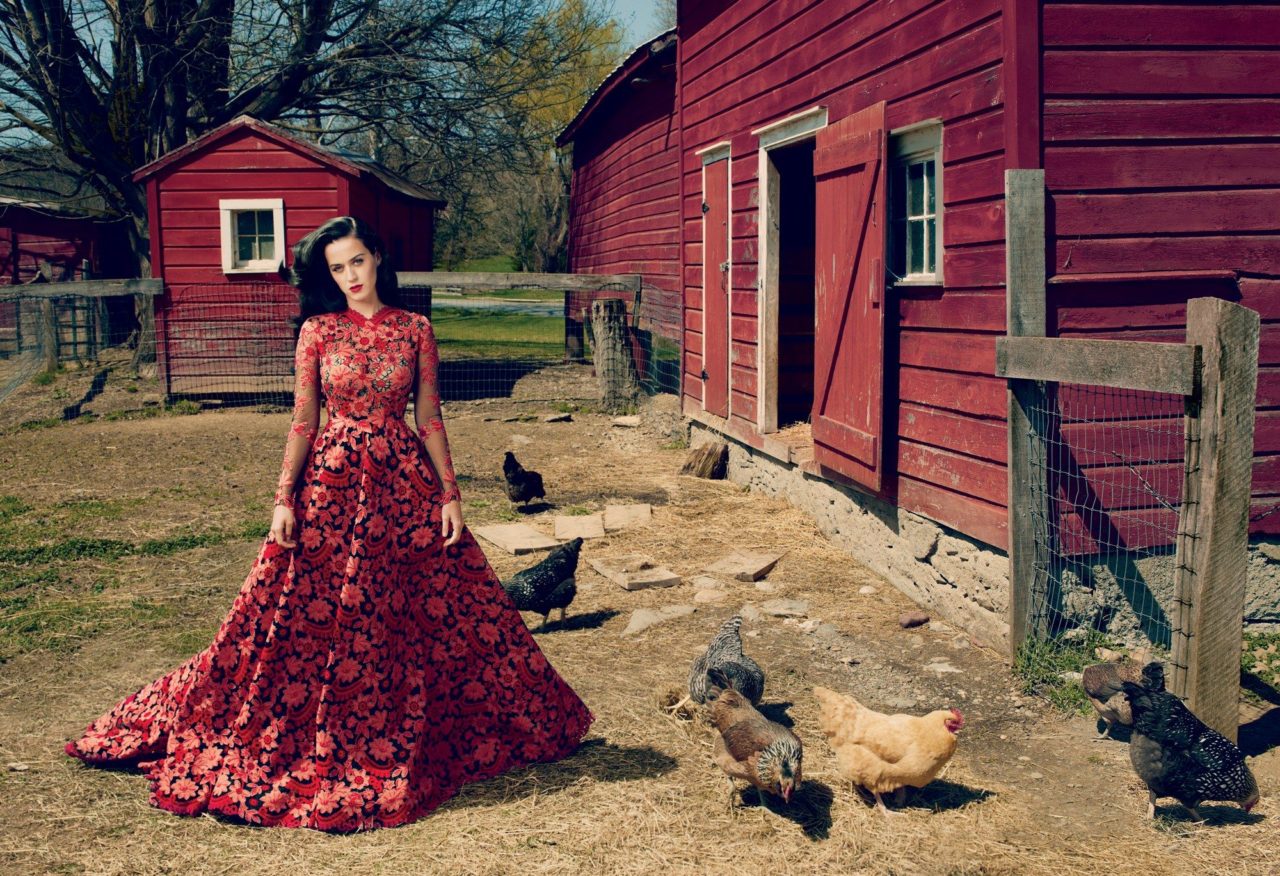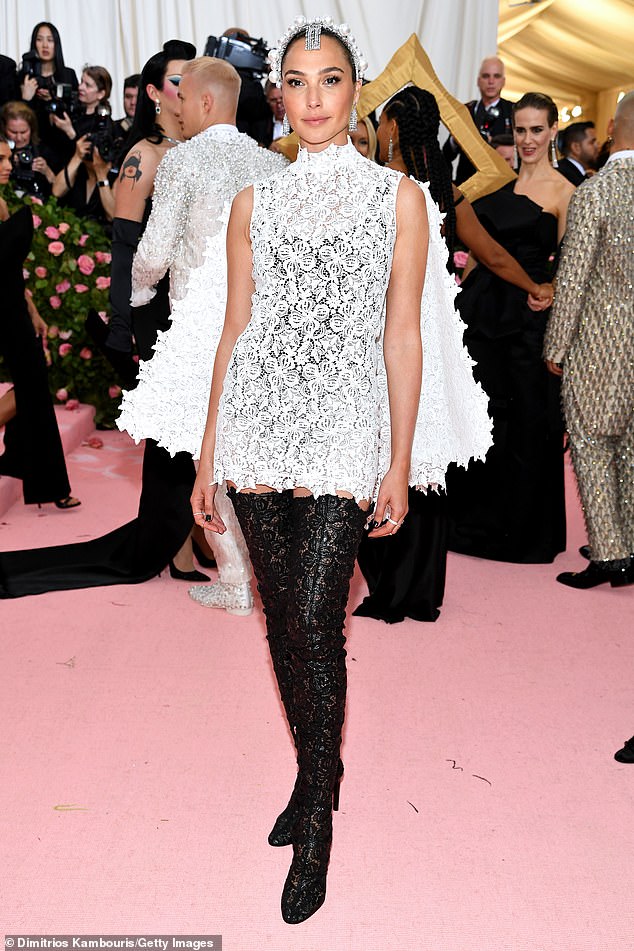Guipure lace is a type of continuous bobbin lace made without a mesh ground; its motifs are connected by bridges or plaits.
The Details
In her book Lessons in Bobbin Lace Making (1992), Doris Southard names several types of guipure lace (Fig. 1):
“Saxony guipure, Cluny, Maltese, and Bohemian lace have much in common. They are all guipure laces; that is, their motifs are joined with braids and twists, rather than with grounds as the torchon laces. They are usually made with relatively coarse linen threads.” (181)
To be considered guipure, a lace must not have a net or mesh ground, and it must be continuous. Prince Rupert in figure 2 has a handsome falling band of guipure lace, a popular accessory in Dutch portraits of this time.
In A History of Handmade Lace (1900) Emily Jackson defines guipure lace as:
“The word Guipure is now indiscriminately applied to all large-patterned laces with coarse grounds, which require no “brides” or bars, and no delicate groundings; but formerly it was the name for a kind of gold and silver thread lace. Guipure was also the name given to a sort of passement or gimp made with ‘cartisane’ and twisted silk. The word is derived from guipé, a thick cord round which silk is rolled. Cartisane is a little strip of thin parchment or vellum, which was covered with silk, gold, or silver thread.” (163).
The Victoria and Albert Museum describes the yellow silk waistcoat in figure 3 as having guipure: “The silver threads have been couched, while the silk is worked mainly in satin stitch. The heavy borders of plain silver thread have been worked over pieces of shaped vellum or parchment, in a technique known in the 18th century as guipure.” (‘Waistcoat.’) It is possible that this is a misuse of ‘guipure’, and the writer meant ‘cartisane’.
The rebato in figure 4 has its edges worked in metal-thread (usually fine strips of silver or gold wrapped around a silk yarn) guipure lace, as Jackson describes.
Cole’s Encyclopedia of Dry Goods (1900) describes guipure:
“Originally, a lace made of fine, stout cords, each composed of several coarse threads laid side by side, or of strips of parchment wound completely round with fine threads… In later use, the term guipure has been applied to any lace made in imitation of the ancient lace, usually rather large in pattern… The word is also loosely used to describe lace having no ground or regular mesh.” (245)
In The Grove Encyclopedia of Decorative Arts (2006), Guipure lace is defined:
“Guipure lace: Type of lace in which where the flowers are either joined by large coarse stitches or threads without any ground at all. It was made with twisted silk and cartisane, a narrow strip of vellum or parchment covered with silk or metallic threads.” (458)
Guipure lace is a type of traditional continuous bobbin lace (as opposed to part lace like Honiton or Brussels or bobbin tape lace like Russian – these are made in pieces and crocheted together at the end). Non-bobbin laces include needle lace (like Alençon, Oya, or point de Venise), crocheted lace (Irish lace), and machine lace (Leavers, bobbinet, etc). Unlike mesh- or net-ground lace, guipure lace has motifs connected with bridges or plaits (Earnshaw, 154). Bedfordshire (Fig. 5), Cluny, Maltese (Fig. 6), and Genoese laces are all types of guipure.
Jackson describes Renaissance guipure:
“The work of Guipure lace-making [in the sixteenth century] was done either with bobbins or with a needle, the stiff lines which formed the pattern being held together by stitches worked with a needle or by the plaiting of the bobbins. From its costliness, being made only in gold, silver, or coloured silk, Guipure was only worn by the rich, or on the livery of the King’s servants… The word Guipure is not found in inventories and records of English lace: Parchment Lace and Dentelle à Cartisan are, however, frequently met with.” (163)
As Jackson describes, guipure of the Renaissance period was finer and more expensive, created with bobbins on pillows. By the nineteenth and twentieth century, imitation laces, made using crochet techniques or automated machinery, were also being called guipure. The lace on the dress in figure 7 is bobbin, but the lace on the Balmain dress in figure 8 and the Ceil Chapman gown in figure 9 are undoubtedly machine-made. While bobbin lace was a time-saver compared to needle lace, these modern techniques are many times faster than either of them.
Fig. 1 - Designer unknown. White linen lace cuff, 1890-1910. Linen; reticella and bobbin lace. England: Fashion Museum Bath, BATMC.2015.39. Source: Bloomsbury Fashion Central
Fig. 2 - Gerrit van Honthorst (Dutch, 1592-1656). The Young Prince Rupert, 1635-40. Oil on panel; (30 x 23.5 in). Salisbury, UK: Collection of the Earl of Pembroke, Wilton House. Source: Flickr
Fig. 3 - Designer unknown (French). Waistcoat (detail of pocket), 1730-39. Silk satin, silver thread, spangles, silk thread; hand-sewn and hand-embroidered. London: Victoria & Albert Museum, 252-1906. Source: VAM
Fig. 4 - Designer unknown (Possibly French). Rebato (collar), early 17th century. Metal-thread bobbin lace, wire, cotton; 40.0 x 45.7 cm (15.75 x 18 in). New York: Metropolitan Museum of Art, 30.135.156. Gift of Mrs. Edward S. Harkness, 1930. Source: MMA
Fig. 5 - Designer unknown (British). Collar, Early 19th century. Bedfordshire bobbin lace; neck: 40.6 cm (16 in). New York: Metropolitan Museum of Art, 08.180.110. The Nuttall Collection, Gift of Mrs. Magdalena Nuttall, 1908. Source: MMA
Fig. 6 - Designer unknown (Maltese). Collar, ca. 1895. Silk. New York: Metropolitan Museum of Art, 2009.300.4204. Brooklyn Museum Costume Collection at The Metropolitan Museum of Art, Gift of the Brooklyn Museum, 2009; Gift of Mrs. George Ernst, 1931. Source: MMA
Fig. 7 - Designer unknown. Unusual garden gown, ca. 1915. Cream cotton lawn; bobbin lace insertion; embroidery. Spring 2016, Early Clothing, 18th Century to 1919, Lot 664. Drexel University Costume Collection. Source: Whitaker Auction
Fig. 8 - Pierre Balmain (French, 1914-1982). Cocktail dress, 1940s. Ecru guipure lace lined with duchess satin; 103 cm. Ultimo, New South Wales: Museum of Applied Arts and Sciences, A8942. Gift of The Fashion Group Incorporated, 1983. Source: MAAS
Fig. 9 - Ceil Chapman (American, 1912-1979). Black and ivory beaded guipure evening gown, 1950s. Silk; bust 83, waist 56 cm (33 x 22in). Kerry Taylor Auctions, Oct 14 2013, lot 268. Anne Dettmer collection. Source: Kerry Taylor Auctions
Its Afterlife
Fig. 10 - Pierpaolo Piccioli for Valentino (Italian, Before 1980-present). Guipure lace dress with crocheted flowers, Summer 2013. Photo: Annie Leibovitz; Model: Katy Perry. Source: Vogue
Fig. 11 - Clare Waight Keller for Givenchy (British, 1970-present). White guipure lace cape dress with thigh high boots in black lacquered guipure lace, Spring 2019. Source: Daily Mail
References:
- Campbell, Gordon. The Grove Encyclopedia of Decorative Arts. Oxford: Oxford Univeristy Press, 2006. http://www.worldcat.org/oclc/1055733501
- Cole, George S. Cole’s Encyclopedia of Dry Goods: A Reference Book for the Whole and Retail Dry Goods Trade of the United States, Containing a Descriptive List of All the Standard Fabrics, Garments, and Related Articles of Merchandise … with a History of Cotton, Silk, Wool, Flax, Jute, Ramie, Hemp and Other Commercial Fibers, and a Full Description of the Processes of Carding, Spinning, Weaving, Bleaching, Dyeing and Printing. Chicago: Root Newspaper Association, 1900. http://www.worldcat.org/oclc/319856327
- Earnshaw, Pat. The Identification of Lace. Aylesbury: Shire, 1986. http://www.worldcat.org/oclc/60014502
- Jackson, Emily. A History of Hand-Made Lace: Dealing with the Origin of Lace, the Growth of the Great Lace Centres, the Mode of Manufacture, the Methods of Distinguishing and the Care of Various Kinds of Lace. New York: C. Scribner’s Sons, 1900. http://www.worldcat.org/oclc/1136199292
- Southard, Doris. Lessons in Bobbin Lacemaking. New York: Dover, 1992. http://www.worldcat.org/oclc/25009438
- “Waistcoat.” V&A Search the Collections. Victoria and Albert Museum. Accessed 26 March 2020. http://collections.vam.ac.uk/item/O137740/waistcoat-unknown

